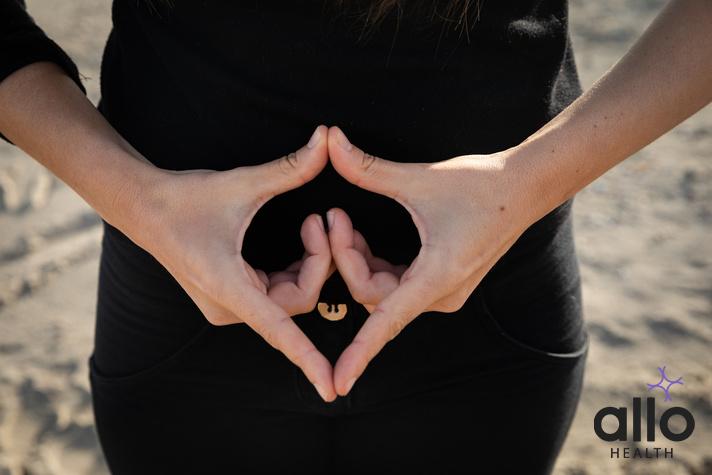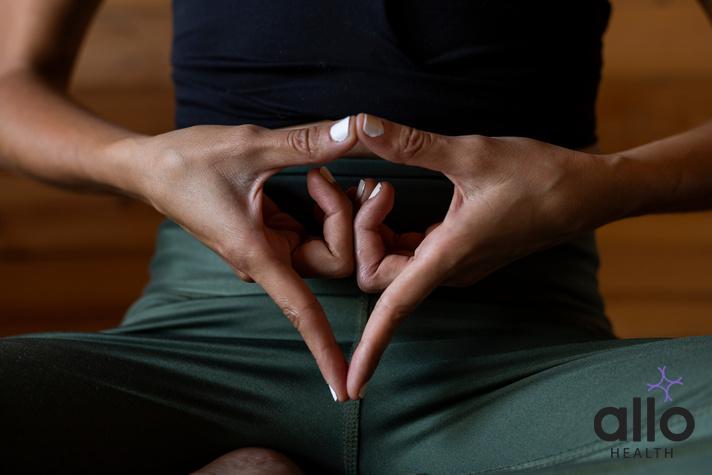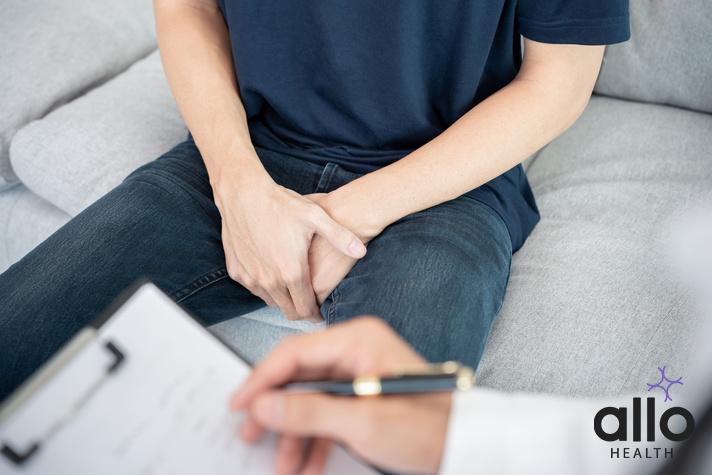6 Mudra for Erectile Dysfunction

Allo Health is dedicated to personalized well-being, offering support and trusted information tailored to individual health goals. The platform emphasizes human-generated content, led by a distinguished medical team of experts, including physicians and sexual health specialists. Their commitment to credibility involves rigorous fact-checking, authoritative research, and continuous updates to ensure accurate, up-to-date information. Allo Health's unique approach goes beyond conventional platforms, providing expert-led insights and a continuous commitment to excellence, with user feedback playing a crucial role in shaping the platform's authoritative voice.

Dr. Raj. R holds an undergraduate medical degree from the Philippines, and has a bachelors background in Psychology. His experience working in the field of urology further brought his interest forward in working towards his passion of understanding the science of attraction, intimacy, sex and relationships. A key motto he practices by remains unprejudiced and non-judgemental care.
Why This Was Upated?
Our experts continually monitor the health and wellness space, and we update our articles when new information became available.
Updated on 31 January, 2024
- Article was updated as part of our commitment to diversity, equity, and inclusion.

"The following blog article discusses alternative medicine practices and their potential effects or benefits. However, it is important to note that the information provided is for general educational purposes only and should not be considered as medical advice or a substitute for professional guidance from a qualified healthcare professional. Before considering any alternative medicine practices or treatments, it is recommended to consult with a healthcare professional.
Book consultation
Alternative medicine encompasses a wide range of practices that may not have undergone rigorous scientific evaluation or received widespread acceptance within the medical community. The effectiveness, safety, and appropriateness of alternative medicine practices can vary significantly depending on the individual, their specific medical conditions, and other factors.
It is important to approach alternative medicine practices with caution and skepticism. Some practices may carry potential risks or interact with existing medical treatments. A healthcare professional can provide guidance based on your medical history, evaluate the available evidence, and offer informed advice regarding the potential benefits and risks of alternative medicine practices.
Individuals with specific medical conditions, allergies, or taking medications should exercise particular caution when considering alternative medicine practices. Some practices may have contraindications or adverse effects, and it is essential to discuss these potential concerns with a healthcare professional before pursuing any alternative treatments."
Erectile dysfunction (ED) is a common health condition affecting many men. While there are various treatments available, yoga and mudras (hand gestures used in yoga) can be effective, natural methods to improve sexual health. This article explores specific yoga poses and mudra for erectile dysfunction.
What is Erectile Dysfunction?
Erectile dysfunction (ED) is a common medical condition where a man finds it difficult to achieve or maintain an erection firm enough for sexual intercourse.
Symptoms of Erectile Dysfunction
- Difficulty Getting an Erection: Struggling to achieve an erection on multiple occasions.
- Trouble Maintaining an Erection: Inability to keep an erection for a sufficient duration.
- Reduced Sexual Desire: A lack of interest in sexual activity.
It’s important to note that occasional difficulty with erections is not necessarily a cause for concern. However, if erectile dysfunction is an ongoing concern, it can cause stress, affect self-confidence, and contribute to relationship problems. Persistent ED can also be a sign of an underlying health condition that needs treatment. It’s advisable for anyone experiencing symptoms of ED to consult a healthcare professional for a proper diagnosis and treatment plan.
How Mudras Help With Erectile Dysfunction?
Mudras, which are specific hand gestures used in yoga, can be beneficial for managing erectile dysfunction (ED) by enhancing overall sexual health and improving bodily functions related to sexual performance. Here’s how they help:
- Improve Blood Circulation: Mudras such as the vajroli mudra are believed to improve blood flow, particularly to the pelvic region. Enhanced blood circulation is crucial for achieving and maintaining erections.
- Strengthen Pelvic Muscles: The ashwini mudra involves contracting and relaxing the pelvic floor muscles, similar to kegel exercises. This strengthens the muscles, which play a key role in sexual performance and control.
- Reduces Stress: Mudras combined with deep breath and yoga postures can act as stress relievers. Since stress is a common factor contributing to ED, reducing it can help in improving sexual function.
- Balances Energy: In traditional practices, mudras are thought to balance the body’s energy or prana, which can have a positive impact on overall health, including sexual health.
- Enhances Prostate Health: Certain mudras like vajroli mudra are believed to benefit the prostate gland, an essential organ for sexual function in males.
- Regulates Blood Pressure and Sugar Levels: Regular practice of yoga mudras can help in regulating blood pressure and blood sugar levels, both of which are important for maintaining sexual health and preventing conditions that can lead to ED.
- Increase Awareness and Mind-Body Connection: Practicing mudras requires mindfulness and concentration, leading to a better mind-body connection. This heightened awareness can enhance sexual experiences and satisfaction.
Incorporating mudras into a regular yoga routine, alongside yoga poses (asanas) and breathing exercises (pranayama), can offer a holistic approach to managing erectile dysfunction.
Note: It’s important to note that while mudras can be beneficial, they should be practiced alongside other treatments and lifestyle changes for the best results.
Different Mudra for Erectile Dysfunction
Mudras, which are symbolic hand gestures used in yoga practices, are believed to have various health benefits, including potentially helping with erectile dysfunction (ED). Here are some common mudras that are often recommended:
-
Ashwini Mudra
- How to Do It: Contract and release the anal sphincter muscles, similar to kegel exercises.
- Benefits: Strengthens pelvic floor muscles, improves blood flow in the pelvic area, and may enhance sexual performance and sexual pleasure.
-
Vajroli Mudra
- How to Do It: Contract the urinary and sexual organs as if trying to stop the flow of urine.
- Benefits: Known as the sex mudra, it focuses on controlling and directing the flow of sexual energy, potentially improving blood flow to the genital area. Improves control over ejaculation and strengthens the urogenital muscles.
-
Ashwa Mudra (Horse Gesture)
- How to Do It: Mimic the posture of a horse in motion using your hands. This involves creating a fist and releasing it rhythmically.
- Benefits: This gesture mimics the stance of a horse, targeting the pelvic area and may help in regulating blood pressure, important for maintaining erections. Believed to stimulate the pelvic region and aid in hormonal balance.
-
Apana Mudra
- How to Do It: Touch the tips of the middle and ring fingers to the tip of the thumb while keeping the other fingers straight.
- Benefits: Helps in detoxifying the body, improving digestion, and enhancing energy flow in the lower abdomen.
-
Shakti Mudra
- How to Do It: Fold your ring and little fingers, and touch their tips to the tip of your thumb, keeping the other fingers extended.
- Benefits: Known to relax the body and mind, reduce stress, and indirectly help with ED which can be stress-related.
-
Linga Mudra
- How to Do It: Interlock the fingers of both hands but keep one thumb upright.
- Benefits: Said to increase heat in the body, boosting energy and vitality.
Note: It’s important to note that while these mudras are part of traditional yoga practice and believed to offer health benefits, their effectiveness for treating medical conditions like erectile dysfunction is not scientifically proven. They should be practiced as complementary therapies alongside conventional treatments and under guidance from qualified health professionals.
How to Incorporate Mudras into Your Routine?

Incorporating mudras into your routine to help with erectile dysfunction (ED) can be a simple and effective way to enhance your overall sexual health. Here’s a step-by-step guide:
Understand Different Mudras for ED
First, understand the mudras that are beneficial for ED:
- Vajroli Mudra: Enhances blood flow to the genital area.
- Ashwini Mudra: Strengthens pelvic floor muscles.
- Ashwa Mudra: Focuses on pelvic muscle strength and blood pressure regulation.
Daily Routine Integration
- Morning Practice: Begin your day with a few minutes of vajroli mudra. This can be done while sitting in bed or during your morning meditation.
- Midday Check-in: During lunch or a break, take a moment for ashwini mudra. It involves contracting and relaxing the pelvic floor muscles, similar to kegel exercises.
- Evening Routine: End your day with ashwa mudra. This can help in relaxing your body and preparing it for a good night’s sleep.
- Incorporating with Yoga Poses: Combine these mudras with yoga poses like baddha konasana (butterfly pose) and simple stretching exercises to enhance blood flow to the pelvic region.
- Maintain Consistency: Practice these mudras regularly. Consistency is key in yoga and mudras for them to be effective.
- Mindful Breathing: While performing these mudras, focus on deep, mindful breathing. This enhances relaxation and reduces stress, which can be beneficial for ED.
Additional Tips
- Learn from Certified Yoga Teacher: Learn these techniques from a certified yoga teacher to ensure correct practice.
- Combine with Deep Breathing Techniques: Combine mudras with deep breathing techniques to alleviate stress, a contributing factor to ED.
- Partner Synchronization: Practice these techniques with your partner to enhance intimacy and effectiveness.
- Pair with Healthy Lifestyle: Balance your mudra practice with a healthy lifestyle, including a balanced diet and regular exercise.
- Consult a Professional: If you have underlying health conditions, consult with a healthcare professional before starting any new exercise regimen.
Regular Assessment
- Periodically assess your progress. Note any changes in your condition and adapt your routine accordingly.
By incorporating these mudras into your daily routine, you can harness the benefits of yoga for improving symptoms of ED, alongside maintaining overall sexual health and wellness.
Disadvantages of Mudras for Erectile Dysfunction

While mudras can be beneficial for various health conditions, including potentially aiding in the management of erectile dysfunction (ED), there are some disadvantages or limitations to consider:
- Limited Scientific Evidence: The effectiveness of mudras for treating ED is not widely supported by scientific research. Most of the benefits are anecdotal or based on traditional beliefs.
- May Not Address Underlying Causes: ED can be a symptom of underlying health conditions like heart disease, diabetes, or hormonal imbalances. Relying solely on mudras might neglect these underlying concerns.
- Not a Substitute for Medical Treatment: Mudras should not replace conventional medical treatments for ED, especially for those with serious health conditions. It’s important to consult healthcare professionals for a proper diagnosis and treatment plan.
- Time and Consistency Required: Like any yoga practice, mudras require consistent practice over time to potentially see benefits. This might be challenging for those seeking quick results.
- Physical Limitations: Some individuals might find it difficult to perform certain mudras or yoga postures due to physical limitations or disabilities.
- Potential for Incorrect Practice: Without proper guidance from a certified yoga instructor, there’s a risk of practicing mudras incorrectly, which can negate their potential benefits.
- Psychological Impact: Over-reliance on mudras for ED without noticeable improvement might lead to frustration or decreased self-esteem, especially if expectations are high.
- Interaction with Other Treatments: For those undergoing medical treatment for ED, it’s crucial to ensure that mudras or any complementary therapy do not negatively interact with their existing treatment plan.
Note: While mudras can be a part of a holistic approach to managing ED, they should be practiced with realistic expectations, preferably under the guidance of a qualified instructor, and should not replace professional medical advice or treatment.
Conclusion
Yoga offers a promising, holistic way to improve erectile dysfunction and enhance sexual pleasure. Its benefits extend beyond just physical improvements, fostering a deeper connection with one’s body and partner, leading to overall improved sexual health and intercourse satisfaction.
Most Asked Questions
-
Can yoga really help with erectile dysfunction?
Yes. Yoga improves blood flow, strengthens pelvic muscles, and reduces stress, all of which are key factors in enhancing sexual health and addressing erectile dysfunction. Regular yoga exercises and specific mudras like ashwini mudra and vajroli mudra can be particularly beneficial.
-
How often should I practice these yoga poses for the best results?
Consistency is key. Practicing these yoga poses daily can offer significant benefits. Start with shorter sessions and gradually increase the duration as you become more comfortable. Remember, regular practice is more important than the length of each session.
-
Do I need to join a yoga class, or can I practice these poses at home?
While joining a yoga class can provide guidance and structure, many of these poses and mudras can be practiced at home. If you’re new to yoga, it might be helpful to start with a few classes to learn the correct techniques, and then continue practicing at home.
-
Are there any risks associated with practicing these yoga poses for erectile dysfunction?
Generally, yoga is a safe and low-impact exercise. However, if you have any existing health conditions or injuries, it’s always a good idea to consult with a healthcare professional before starting any new exercise regimen, including yoga.






































